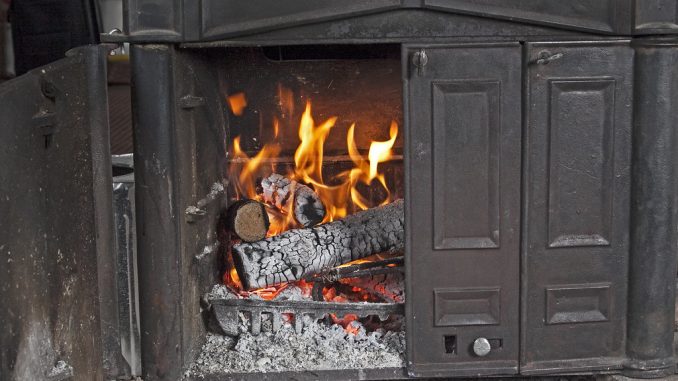
Choosing the right type of wood for your wood-burning stove is essential to get the best heat output, reduce smoke, and ensure a clean burn. Not all wood is created equal when it comes to burning, so selecting the right type can make a significant difference in efficiency and warmth. Whether you’re new to using a stove or just looking to improve your wood-burning experience, understanding which types of wood to use can make all the difference.
In this post, we’ll explore the best types of wood for wood-burning stoves, focusing on their burn quality, heat output, and how to get the most out of your stove.
Different Types of Wood for a Wood-burning Stove
Ash Wood
Ash wood is often considered one of the best woods for burning in a stove. It has a high heat output and burns evenly, making it ideal for those looking for long-lasting warmth. Ash can be burnt green (unseasoned), although it will burn better once seasoned. It produces very little smoke, making it a clean option for your stove.
- Heat Output: High
- Burn Quality: Steady and clean
- Ideal for: Both short and long fires, day-to-day use
Oak Wood
Oak wood is a dense hardwood that provides excellent heat output but requires a long seasoning period—often up to two years—before it’s ready to burn. Once properly seasoned, oak produces a long, slow burn and is ideal for maintaining a consistent heat over several hours.
- Heat Output: Very high
- Burn Quality: Slow-burning and long-lasting
- Ideal for: Long, sustained fires, overnight burning
Birch Wood
Birch wood is a great choice for starting a fire because it lights easily and burns quickly. Although it doesn’t burn as long as some other hardwoods, it gives off a good amount of heat and can be mixed with slower-burning woods like oak or ash to create an efficient, easy-to-manage fire. Birch also has a pleasant aroma, which makes it a popular option.
- Heat Output: Medium
- Burn Quality: Quick burning, moderate heat
- Ideal for: Quick fires, starting larger fires
Beech Wood
Beech wood burns similarly to ash, offering a strong, steady heat output. It needs to be well-seasoned because it retains a lot of moisture, but once dried, beech can provide a reliable and efficient fire. However, it’s prone to decay if left unseasoned for too long, so it should be stored properly.
- Heat Output: High
- Burn Quality: Steady and reliable
- Ideal for: Long, consistent heating
Cherry Wood
Cherry wood is not only great for burning but also gives off a pleasant aroma. It’s a slow burner, producing good heat with minimal smoke. Cherry takes time to season but is a great option for mixing with other hardwoods to create a steady, long-lasting fire.
- Heat Output: Medium
- Burn Quality: Steady, clean burn
- Ideal for: Mixed fires, pleasant aroma
Sycamore Wood
Sycamore wood is a good all-around wood, known for its easy lighting and decent burn time. While not as long-lasting as oak or ash, it’s ideal for those who want quick, high heat. It seasons quickly and provides a clean burn without much smoke.
- Heat Output: Medium
- Burn Quality: Quick to light, steady burn
- Ideal for: Fast heat, easy fires
Hawthorn Wood
Hawthorn wood is a dense, slow-burning wood that provides high heat output. It takes a while to season, but once ready, it produces a long-lasting and efficient fire. This wood is particularly good for keeping fires going overnight or for extended periods without needing to constantly refuel.
- Heat Output: Very high
- Burn Quality: Long and steady
- Ideal for: Overnight burning, long-term use
Pine Wood
Pine wood and other softwoods can be useful for kindling and starting a fire, but they shouldn’t be your main source of fuel. Pine burns quickly and produces a lot of resin, which can lead to creosote buildup in your chimney. It’s best used for starting fires and then supplemented with hardwoods for a long-lasting burn.
- Heat Output: Low to medium
- Burn Quality: Fast burning, crackles
- Ideal for: Kindling, starting fires
When choosing wood for your wood-burning stove, hardwoods like ash, oak, and beech are your best bet for a long, efficient burn. These woods provide high heat and burn cleanly, helping you get the most out of your stove. Softwoods like pine are better suited for kindling or shorter fires. No matter the wood you choose, always ensure it is properly seasoned to reduce moisture content and improve its burning quality.
By selecting the right wood and maintaining a good supply, you’ll keep your home warm, cosy, and energy-efficient all winter long.

Leave a Reply